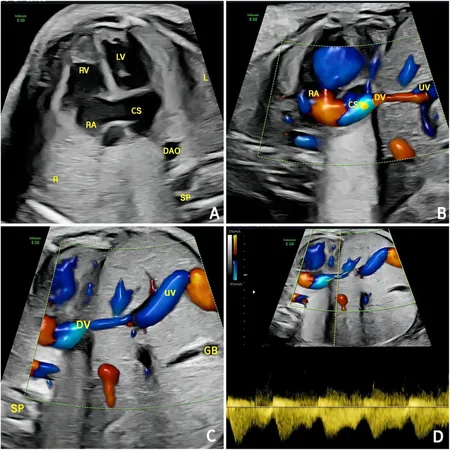
Prediabetes: A Silent But Serious Threat to Public Health, Experts Warn at the ACP 2025
2025-04-04
Author: Wei Ling
During an eye-opening presentation at the 2025 American College of Physicians Internal Medicine Meeting in New Orleans, Dr. Samuel Dagogo-Jack shared crucial insights into the alarming rise of prediabetes, a condition that now affects roughly 97.6 million adults in the United States alone, and around 860 million people globally. Despite its prevalence, awareness of prediabetes remains shockingly inadequate. Between 2005 and 2022, awareness rates have only modestly increased from a dismal 4-7.7% to about 20%, meaning that a staggering 80% of adults with prediabetes are unaware they are at significant risk for developing type 2 diabetes.
The Hidden Epidemic
Dr. Dagogo-Jack highlighted how underdiagnosis can have serious ramifications. A study found that less than 1% of patients documented with laboratory-confirmed prediabetes in their medical records were correctly diagnosed, and only 23% received appropriate treatment recommendations. With diagnostic criteria defined by the American Diabetes Association including fasting plasma glucose levels between 100-125 mg/dL, and an HbA1c of 5.7%-6.4%, the stakes couldn’t be higher.
Adding to the complexity, disparities in diagnostic results among different ethnic groups were discussed, notably that non-Hispanic Black individuals tend to have higher HbA1c levels than their White counterparts even when their glucose levels are similar. This raises concerns about the universal applicability of these diagnoses across various demographics.
Serious Complications Start Earlier Than You Think
Often dismissed as a mere warning sign, prediabetes can lead to significant, long-term complications. Dr. Dagogo-Jack revealed shocking evidence that nearly half of those who already have type 2 diabetes exhibit signs of complications such as retinopathy, neuropathy, and nephropathy at the time of diagnosis. Furthermore, about 20% of people identified with prediabetes show signs of chronic kidney disease.
The cardiovascular risks are equally startling. Individuals with impaired glucose tolerance face double the risk of developing heart disease, emphasizing the urgent need for proactive management and recognition of this condition as a serious health threat.
Understanding the Pathophysiology of Prediabetes
In his extensive research, Dr. Dagogo-Jack presented findings from his own study, which tracked individuals with a family history of type 2 diabetes. Although not all participants progressed to prediabetes, the research uncovered significant predictors for progression—factors like age, sex, body fat, blood pressure, and baseline glycemic values play crucial roles in individual risk profiles.
With annual progression rates from prediabetes to diabetes ranging from 5.8% to 18.3%, the necessity for early diagnosis and intervention cannot be overstated.
Lifestyle Changes: A Powerful Preventative Measure
Current guidelines suggest intensive lifestyle programs modeled after the Diabetes Prevention Program for adults diagnosed with prediabetes. Key goals include achieving a weight loss of 7% and engaging in at least 150 minutes of moderate-intensity physical activity weekly.
In groundbreaking findings, Dr. Dagogo-Jack pointed to studies demonstrating that simple lifestyle modifications can effectively reverse the course of prediabetes back to normal glucose regulation. For those at high risk, medications like metformin might be considered, although it remains off-label for prediabetes treatment.
The clinical significance of early intervention can be staggering, with risk reduction tied directly to the number of follow-ups resulting in normalized glucose levels: - 47% risk reduction for normalization after one visit - 61% for two visits - 67% for three visits
Clinician Takeaways: Moving Forward with Awareness and Action
Dr. Dagogo-Jack emphasized several essential points for healthcare providers: 1. Utilize multiple testing modalities for diagnosis, aware of their limitations in agreement. 2. Approach HbA1c test results with caution, particularly in diverse populations. 3. Recognize the associated risks and complications that come with prediabetes. 4. Advocate for lifestyle interventions as the primary management strategy. 5. Remain informed on the potential role of medications for high-risk individuals.
With the prevalence of prediabetes continually on the rise, Dr. Dagogo-Jack's urgent message resonates: proactive identification and management can significantly impact health outcomes, heralding a call for increased vigilance in primary care to combat this looming public health crisis.





 Brasil (PT)
Brasil (PT)
 Canada (EN)
Canada (EN)
 Chile (ES)
Chile (ES)
 Česko (CS)
Česko (CS)
 대한민국 (KO)
대한민국 (KO)
 España (ES)
España (ES)
 France (FR)
France (FR)
 Hong Kong (EN)
Hong Kong (EN)
 Italia (IT)
Italia (IT)
 日本 (JA)
日本 (JA)
 Magyarország (HU)
Magyarország (HU)
 Norge (NO)
Norge (NO)
 Polska (PL)
Polska (PL)
 Schweiz (DE)
Schweiz (DE)
 Singapore (EN)
Singapore (EN)
 Sverige (SV)
Sverige (SV)
 Suomi (FI)
Suomi (FI)
 Türkiye (TR)
Türkiye (TR)
 الإمارات العربية المتحدة (AR)
الإمارات العربية المتحدة (AR)